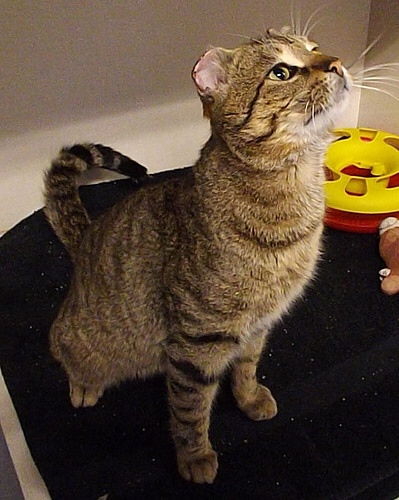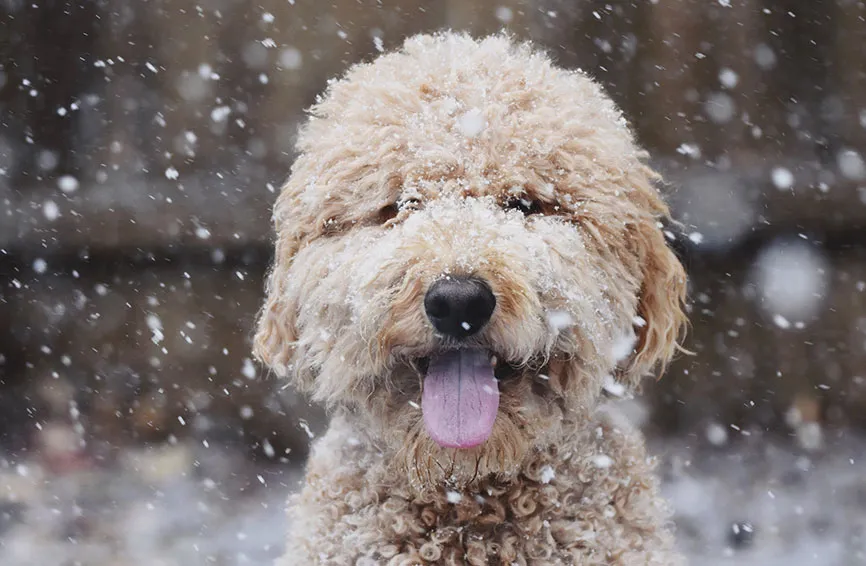Table of Contents
Key Takeaways
- Hypothermia may develop if a pet is exposed to freezing temperatures for too long.
- Frostbite refers to skin and tissue damage after exposure to frigid temperatures.
- Antifreeze poisoning results from ingestion of ethylene glycol and is life-threatening.
- Upper respiratory infections can occur in the winter.
- Kennel cough can be caused by bacteria or viruses and is highly contagious among dogs.
The weather outside is frightful, but to some snow-loving pets, it may seem delightful. Read on to learn how your pooch or kitty can enjoy the winter wonderland safely and avoid these common winter conditions.
1. Hypothermia
Hypothermia occurs when a pet’s body temperature drops dangerously low after prolonged exposure to freezing temperatures. Clinical signs of hypothermia in dogs may include shivering, lethargy, listlessness, and cold skin. To prevent hypothermia, do not allow your pet to stay outside for extended periods in cold weather. Keep bathroom breaks and walks short, and protect your pet’s paws with booties. A sweater, jacket, or fleece can also keep fur dry and your pet warm.
If you’re concerned your dog’s temperature may be dropping due to exposure to frigid weather, you can take your pet’s temperature via a rectal thermometer and call your veterinarian for further guidance.

2. Frostbite
In extreme temperatures, blood vessels in the extremities constrict to maintain the core body temperature. When this happens, the tissues underneath the exposed skin can become damaged through frostbite. Fur and skin soaked from snow or ice increases your pet’s risk of frostbite.
Clinical signs of frostbite may include cold skin that has developed blisters or changed color and pain or inflammation at the affected site. Prevent frostbite in your pets by limiting outdoor activity in frigid temperatures. As previously mentioned, keeping fur and skin dry and using pet-friendly outerwear may also be helpful. If signs of frostbite develop, bring your pet inside to a warm area and consult a veterinarian immediately.
3. Antifreeze poisoning
Ethylene glycol, an additive in antifreeze, gives the substance its sweet taste. However, this characteristic also attracts pets to this harmful liquid. Pets may lick antifreeze off garage floors, driveways, or streets.
Clinical signs of antifreeze poisoning include incoordination, nausea, vomiting, hypothermia, breathing and heart rate abnormalities, changes in urination, seizures, and coma.
Prevent antifreeze poisoning by storing this chemical out of paws’ reach. Make sure to clean up all garage spills immediately if they do occur. Contact your veterinarian immediately if you suspect your pet may have ingested antifreeze.
4. The sniffles
Just like humans, dogs and cats can have upper respiratory infections. A mild cough, runny nose, eye discharge, and sneezing may all be signs of this condition.
If you notice any of these signs developing in your pet, contact your veterinarian. Some pets need antibiotics in order to improve, and your veterinarian can provide additional tips to help keep your pet comfortable during recovery, such as using a humidifier to help moisten the airway.
5. Kennel cough
Dogs are susceptible to canine infectious tracheobronchitis, also known as kennel cough. Time at boarding facilities, winter temperatures, and stress all increase the risk of developing kennel cough. Bacteria or viruses (or both) can be responsible for the condition.
A goose-like, honking cough is the primary sign of this condition, but sneezing, a runny nose, and eye discharge are also common. The best way to prevent kennel cough is through vaccination. Quarantining affected pets can also prevent the spread of disease. If these signs develop, visit your pet’s veterinarian to determine the cause and receive appropriate treatment for your pet.
The content is not intended to be a substitute for professional veterinarian advice, diagnosis, or treatment. Always seek the advice of your veterinarian or other qualified health provider with any questions you may have regarding a medical diagnosis, condition, or treatment options.
Protect your pets – and your wallet – by enrolling in pet insurance. Healthy Paws offers one simple plan to protect cats and dogs from nose to toes. Start by getting a free quote.








